Linux高并发web服务器开发——web服务器-2
在学习Linux高并发web服务器开发总结了笔记,并分享出来。有问题请及时联系博主:Alliswell_WP,转载请注明出处。
11_服务器开发-第02天(web服务器 - 2)
目录:
一、sourceInsight安装及使用
二、学习目标
三、复习
四、服务器端代码实现
》epoll服务器各部分代码
问题:中文显示乱码?
》代码优化
1)通过文件名获取文件的类型?
2)如果文件不存在,提示404
3)浏览器一直请求,一直转圈?
》程序测试
》scanf和正则表达式
》scandir
》数据转码
一、sourceInsight安装及使用
SourceInsight 这款软件,可以用来编辑代码,在嵌入式Linux开发中,很多人用它来修改代码和查看代码,再将代码同步到linux下,用嵌入式(一般是ARM for GNU toolchain)交叉编译工具链来进行代码编译。是一个面向项目开发的程序编辑器和代码浏览器,可支持C/C++或Java等多种语言,还可以创建自己的符号数据库,方便实用。
》解决的问题:可能你还是不明白用SourceInsight来干嘛,简单举个例子,写过代码的你都知道,你有一个代码工程,有很多个文件,你为了找到一个全局变量或者函数,找老半天没有找到。有了SourceInsight,你就直接双击这个函数或者全局变量,就可以跳到定义的地方。
》下载:
从百度云中下载文件,链接:https://pan.baidu.com/s/1ml75LW0ft4bo4s9T3AiQRA
提取码:oyat
》安装及破解:
双击“sourceinsight4085-setup.exe”进行安装,一路默认即可,最后记得安装完那一步把运行先勾选掉。——>然后把“sourceinsight4.exe”替换掉安装目录(默认安装目录:C:\Program Files (x86)\Source Insight 4.0)下的“sourceinsight4.exe”——>双击“sourceinsight4.exe”打开——>选择“Import a new licence file”,然后使用“si4.pediy.lic”文件来破解。
》打开其他project目录方法:
方法一:在菜单栏中的project目录下新建新的工程,然后将自己想看的代码放入这个工程中,就可以在source insight中看这个文件(一般新建的时候都是默认在C盘的base文件夹中,要记得修改好)
方法二:将想要看的代码从库中复制出来,然后将它作为新建的工程目录,它就可以会生成si4.prooject目录,就可以打开它直接在软件上看代码了
》界面布局设置:

1.界面一打开方式:
在菜单栏选择 View,之后在下面勾选 *Symbol Window *或者直接 Alt+F8
2.界面二的代码行数显示
View------>Line Numbers,就可以显示代码行数
3.界面二的Overview
View------>Overview
4.剩下的操作按照图片来操作即可,将打钩的框图打钩好就可以;出现的框图可以拖动,按照自己想要的方式放好即可
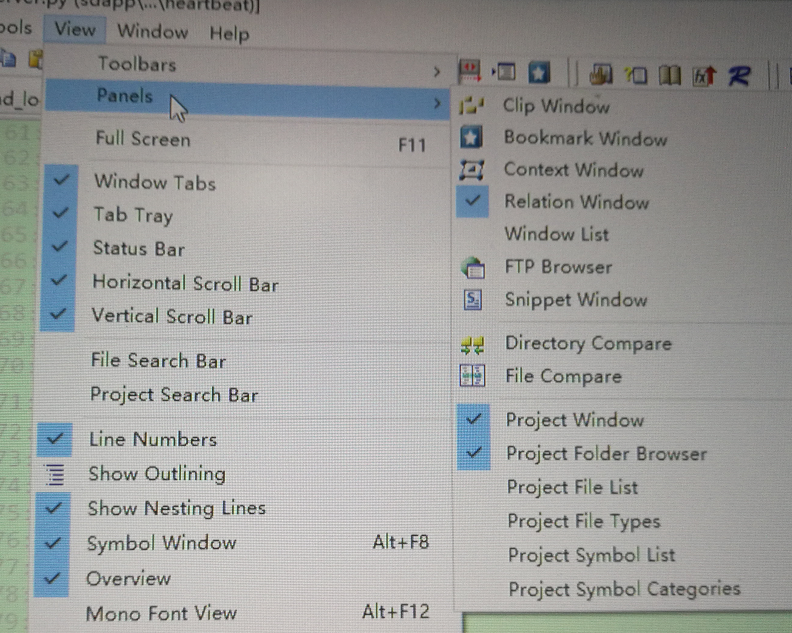
》界面颜色设置:
按照图片来设置,颜色我是设置为R199 G237 U204
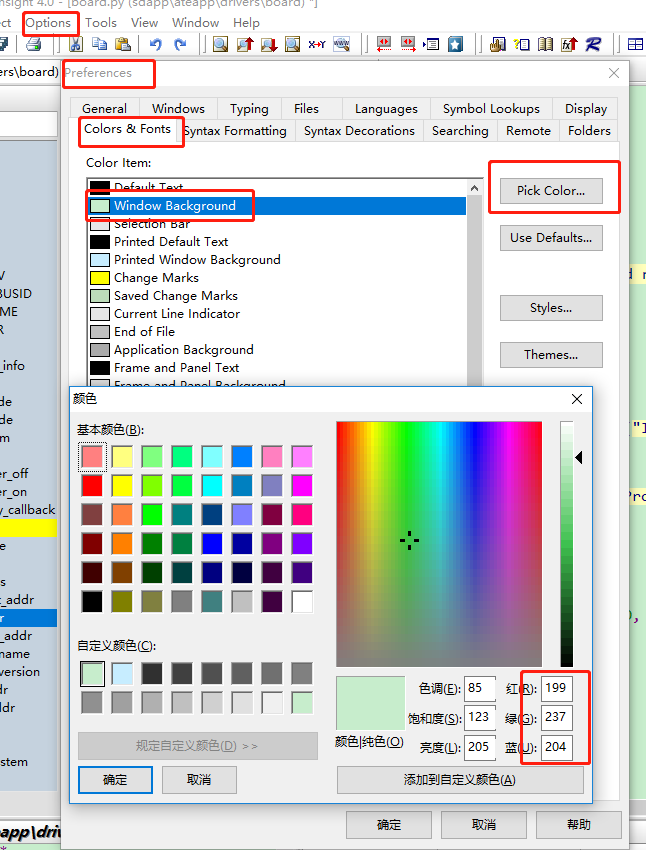
二、学习目标
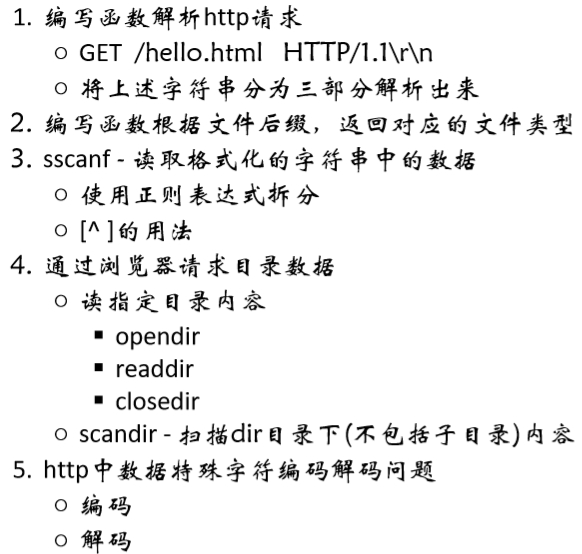
三、复习
1、html标签
2、http协议
四、服务器端代码实现
》epoll服务器各部分代码:
(1)主体函数:epoll_run

void epoll_run(int port) { // 创建一个epoll树的根节点 int epfd = epoll_create(MAXSIZE); if(epfd == -1) { perror("epoll_create error"); exit(1); } // 添加要监听的节点 // 先添加监听lfd int lfd = init_listen_fd(port, epfd); // 委托内核检测添加到树上的节点 struct epoll_event all[MAXSIZE]; while(1) { int ret = epoll_wait(epfd, all, MAXSIZE, -1); if(ret == -1) { perror("epoll_wait error"); exit(1); } // 遍历发生变化的节点 for(int i=0; i<ret; ++i) { // 只处理读事件, 其他事件默认不处理 struct epoll_event *pev = &all[i]; if(!(pev->events & EPOLLIN)) { // 不是读事件 continue; } if(pev->data.fd == lfd) { // 接受连接请求 do_accept(lfd, epfd); } else { // 读数据 do_read(pev->data.fd, epfd); } } } }
(2)添加要监听的节点的函数:init_listen_fd

int init_listen_fd(int port, int epfd) { // 创建监听的套接字 int lfd = socket(AF_INET, SOCK_STREAM, 0); if(lfd == -1) { perror("socket error"); exit(1); } // lfd绑定本地IP和port struct sockaddr_in serv; memset(&serv, 0, sizeof(serv)); serv.sin_family = AF_INET; serv.sin_port = htons(port); serv.sin_addr.s_addr = htonl(INADDR_ANY); // 端口复用 int flag = 1; setsockopt(lfd, SOL_SOCKET, SO_REUSEADDR, &flag, sizeof(flag)); int ret = bind(lfd, (struct sockaddr*)&serv, sizeof(serv)); if(ret == -1) { perror("bind error"); exit(1); } // 设置监听 ret = listen(lfd, 64); if(ret == -1) { perror("listen error"); exit(1); } // lfd添加到epoll树上 struct epoll_event ev; ev.events = EPOLLIN; ev.data.fd = lfd; ret = epoll_ctl(epfd, EPOLL_CTL_ADD, lfd, &ev); if(ret == -1) { perror("epoll_ctl add lfd error"); exit(1); } return lfd; }
(3)接收连接请求函数:do_accept

// 接受新连接处理 void do_accept(int lfd, int epfd) { struct sockaddr_in client; socklen_t len = sizeof(client); int cfd = accept(lfd, (struct sockaddr*)&client, &len); if(cfd == -1) { perror("accept error"); exit(1); } // 打印客户端信息 char ip[64] = {0}; printf("New Client IP: %s, Port: %d, cfd = %d\n", inet_ntop(AF_INET, &client.sin_addr.s_addr, ip, sizeof(ip)), ntohs(client.sin_port), cfd); // 设置cfd为非阻塞 int flag = fcntl(cfd, F_GETFL); flag |= O_NONBLOCK; fcntl(cfd, F_SETFL, flag); // 得到的新节点挂到epoll树上 struct epoll_event ev; ev.data.fd = cfd; // 边沿非阻塞模式 ev.events = EPOLLIN | EPOLLET; int ret = epoll_ctl(epfd, EPOLL_CTL_ADD, cfd, &ev); if(ret == -1) { perror("epoll_ctl add cfd error"); exit(1); } }
(4)读数据函数:do_read

// 读数据 void do_read(int cfd, int epfd) { // 将浏览器发过来的数据, 读到buf中 char line[1024] = {0}; // 读请求行 int len = get_line(cfd, line, sizeof(line)); if(len == 0) { printf("客户端断开了连接...\n"); // 关闭套接字, cfd从epoll上del disconnect(cfd, epfd); } else { printf("请求行数据: %s", line); printf("============= 请求头 ============\n"); // 还有数据没读完 // 继续读 while(len) { char buf[1024] = {0}; len = get_line(cfd, buf, sizeof(buf)); printf("-----: %s", buf); } printf("============= The End ============\n"); } // 请求行: get /xxx http/1.1 // 判断是不是get请求 if(strncasecmp("get", line, 3) == 0)//strncasecmp比较前3个字符且不区分大小写 { // 处理http请求 http_request(line, cfd); // 关闭套接字, cfd从epoll上del disconnect(cfd, epfd); } }
(5)解析http请求消息的每一行内容函数:getline

// 解析http请求消息的每一行内容 int get_line(int sock, char *buf, int size) { int i = 0; char c = '\0'; int n; while ((i < size - 1) && (c != '\n')) { n = recv(sock, &c, 1, 0); if (n > 0) { if (c == '\r') { n = recv(sock, &c, 1, MSG_PEEK); if ((n > 0) && (c == '\n')) { recv(sock, &c, 1, 0); } else { c = '\n'; } } buf[i] = c; i++; } else { c = '\n'; } } buf[i] = '\0'; return i; }
(6)断开连接的函数:disconnect

// 断开连接的函数 void disconnect(int cfd, int epfd) { int ret = epoll_ctl(epfd, EPOLL_CTL_DEL, cfd, NULL); if(ret == -1) { perror("epoll_ctl del cfd error"); exit(1); } close(cfd); }
(7)http请求处理:http_request(其中sscanf使用正则表达式格式化字符串)

// http请求处理 void http_request(const char* request, int cfd) { // 拆分http请求行 // get /xxx http/1.1 char method[12], path[1024], protocol[12]; sscanf(request, "%[^ ] %[^ ] %[^ ]", method, path, protocol); printf("method = %s, path = %s, protocol = %s\n", method, path, protocol); // 转码 将不能识别的中文乱码 - > 中文 // 解码 %23 %34 %5f decode_str(path, path); // 处理path /xx // 去掉path中的/ char* file = path+1; // 如果没有指定访问的资源, 默认显示资源目录中的内容 if(strcmp(path, "/") == 0) { // file的值, 资源目录的当前位置 file = "./"; } // 获取文件属性 struct stat st; int ret = stat(file, &st); if(ret == -1) { // show 404 send_respond_head(cfd, 404, "File Not Found", ".html", -1); send_file(cfd, "404.html");//需要提前写好一个404.html的网页 } // 判断是目录还是文件 // 如果是目录 if(S_ISDIR(st.st_mode)) { // 发送头信息 send_respond_head(cfd, 200, "OK", get_file_type(".html"), -1); // 发送目录信息 send_dir(cfd, file); } else if(S_ISREG(st.st_mode)) { // 文件 // 发送消息报头 send_respond_head(cfd, 200, "OK", get_file_type(file), st.st_size); // 发送文件内容 send_file(cfd, file); } }
(8)发送http响应头函数:send_respond_head

// 发送响应头 void send_respond_head(int cfd, int no, const char* desp, const char* type, long len) { char buf[1024] = {0}; // 状态行 sprintf(buf, "http/1.1 %d %s\r\n", no, desp); send(cfd, buf, strlen(buf), 0); // 消息报头 sprintf(buf, "Content-Type:%s\r\n", type); sprintf(buf+strlen(buf), "Content-Length:%ld\r\n", len); send(cfd, buf, strlen(buf), 0); // 空行 send(cfd, "\r\n", 2, 0); }
(9)发送普通文件函数:send_file

// 发送文件 void send_file(int cfd, const char* filename) { // 打开文件 int fd = open(filename, O_RDONLY); if(fd == -1) { // show 404 return; } // 循环读文件 char buf[4096] = {0}; int len = 0; while( (len = read(fd, buf, sizeof(buf))) > 0 ) { // 发送读出的数据 send(cfd, buf, len, 0); } if(len == -1) { perror("read file error"); exit(1); } close(fd); }
(10)发送目录内容的函数:send_dir(包括readdir读目录;更好的是scandir)

// 发送目录内容 void send_dir(int cfd, const char* dirname) { // 拼一个html页面<table></table> char buf[4094] = {0}; sprintf(buf, "<html><head><title>目录名: %s</title></head>", dirname); sprintf(buf+strlen(buf), "<body><h1>当前目录: %s</h1><table>", dirname); char enstr[1024] = {0}; char path[1024] = {0}; // 目录项二级指针 struct dirent** ptr; int num = scandir(dirname, &ptr, NULL, alphasort); // 遍历 for(int i=0; i<num; ++i) { char* name = ptr[i]->d_name; // 拼接文件的完整路径 sprintf(path, "%s/%s", dirname, name); printf("path = %s ===================\n", path); struct stat st; stat(path, &st); encode_str(enstr, sizeof(enstr), name); // 如果是文件 if(S_ISREG(st.st_mode)) { sprintf(buf+strlen(buf), "<tr><td><a href=\"%s\">%s</a></td><td>%ld</td></tr>", enstr, name, (long)st.st_size); } // 如果是目录 else if(S_ISDIR(st.st_mode)) { sprintf(buf+strlen(buf), "<tr><td><a href=\"%s/\">%s/</a></td><td>%ld</td></tr>", enstr, name, (long)st.st_size); } send(cfd, buf, strlen(buf), 0); memset(buf, 0, sizeof(buf)); // 字符串拼接 } sprintf(buf+strlen(buf), "</table></body></html>"); send(cfd, buf, strlen(buf), 0); printf("dir message send OK!!!!\n"); #if 0 // 打开目录 DIR* dir = opendir(dirname); if(dir == NULL) { perror("opendir error"); exit(1); } // 读目录 struct dirent* ptr = NULL; while( (ptr = readdir(dir)) != NULL ) { char* name = ptr->d_name; } closedir(dir); #endif }
》问题:中文显示乱码?
分析及处理:处理http协议需要编码和解码的原因:http协议中请求或响应,不支持中文。所以需要转码。
》编解码函数介绍:解码encode_str,编码decode_str(头文件#include <ctype.h>)

// 16进制数转化为10进制 int hexit(char c) { if (c >= '0' && c <= '9') return c - '0'; if (c >= 'a' && c <= 'f') return c - 'a' + 10; if (c >= 'A' && c <= 'F') return c - 'A' + 10; return 0; } /* * 这里的内容是处理%20之类的东西!是"解码"过程。 * %20 URL编码中的‘ ’(space) * %21 '!' %22 '"' %23 '#' %24 '$' * %25 '%' %26 '&' %27 ''' %28 '('...... * 相关知识html中的‘ ’(space)是  */ void encode_str(char* to, int tosize, const char* from) { int tolen; for (tolen = 0; *from != '\0' && tolen + 4 < tosize; ++from) { if (isalnum(*from) || strchr("/_.-~", *from) != (char*)0) //数字或/_.-~这几个特殊字符不需要转 { *to = *from; ++to; ++tolen; } else { sprintf(to, "%%%02x", (int) *from & 0xff);//前面%%相当于一个%,%02x为两位的十六进制,最后得到如:%23,%04 //把任何一个字符转为一个十六进制数:(int) *from & 0xff to += 3;//一个中文占3个字节,指针后移 tolen += 3; } } *to = '\0'; } //“编码”,用作回写浏览器的时候,将除字母数字及/_.-~以外的字符转义后回写。 void decode_str(char *to, char *from) { for ( ; *from != '\0'; ++to, ++from ) { if (from[0] == '%' && isxdigit(from[1]) && isxdigit(from[2])) //isxdigit判断参数是否为16进制数字,是返回非零,否则返回0 { //依次判断from中 %20 三个字符 *to = hexit(from[1])*16 + hexit(from[2]);//16进制转为10进制 //移动已经处理的两个字符(%21指针指向1),表达式3的++from还会再向后移一个字符 from += 2; } else { *to = *from; } } *to = '\0'; }
》代码优化——
》1)通过文件名获取文件的类型?

// 通过文件名获取文件的类型 const char *get_file_type(const char *name) { char* dot; // 自右向左查找‘.’字符, 如不存在返回NULL dot = strrchr(name, '.'); if (dot == NULL) return "text/plain; charset=utf-8"; if (strcmp(dot, ".html") == 0 || strcmp(dot, ".htm") == 0) return "text/html; charset=utf-8"; if (strcmp(dot, ".jpg") == 0 || strcmp(dot, ".jpeg") == 0) return "image/jpeg"; if (strcmp(dot, ".gif") == 0) return "image/gif"; if (strcmp(dot, ".png") == 0) return "image/png"; if (strcmp(dot, ".css") == 0) return "text/css"; if (strcmp(dot, ".au") == 0) return "audio/basic"; if (strcmp( dot, ".wav" ) == 0) return "audio/wav"; if (strcmp(dot, ".avi") == 0) return "video/x-msvideo"; if (strcmp(dot, ".mov") == 0 || strcmp(dot, ".qt") == 0) return "video/quicktime"; if (strcmp(dot, ".mpeg") == 0 || strcmp(dot, ".mpe") == 0) return "video/mpeg"; if (strcmp(dot, ".vrml") == 0 || strcmp(dot, ".wrl") == 0) return "model/vrml"; if (strcmp(dot, ".midi") == 0 || strcmp(dot, ".mid") == 0) return "audio/midi"; if (strcmp(dot, ".mp3") == 0) return "audio/mpeg"; if (strcmp(dot, ".ogg") == 0) return "application/ogg"; if (strcmp(dot, ".pac") == 0) return "application/x-ns-proxy-autoconfig"; return "text/plain; charset=utf-8"; }
》2)如果文件不存在,提示404——提前准备好404.html文件
在http_request更改如下:
1 if(ret == -1) 2 { 3 // show 404 4 send_respond_head(cfd, 404, "File Not Found", ".html", -1); 5 send_file(cfd, "404.html");//需要提前写好一个404.html的网页 6 }
》3)浏览器一直请求,一直转圈?
原因请求完数据,还在等待请求小图标。
解决:在代码目录下放个小的图标,名字固定favicon.ico,就可以显示图标。
》更改后代码为:(epoll_server.c)
1 #include <stdio.h> 2 #include <unistd.h> 3 #include <stdlib.h> 4 #include <sys/types.h> 5 #include <string.h> 6 #include <sys/epoll.h> 7 #include <arpa/inet.h> 8 #include <fcntl.h> 9 #include <dirent.h> 10 #include <sys/stat.h> 11 #include <ctype.h> 12 #include "epoll_server.h" 13 14 #define MAXSIZE 2000 15 16 void epoll_run(int port) 17 { 18 // 创建一个epoll树的根节点 19 int epfd = epoll_create(MAXSIZE); 20 if(epfd == -1) 21 { 22 perror("epoll_create error"); 23 exit(1); 24 } 25 26 // 添加要监听的节点 27 // 先添加监听lfd 28 int lfd = init_listen_fd(port, epfd); 29 30 // 委托内核检测添加到树上的节点 31 struct epoll_event all[MAXSIZE]; 32 while(1) 33 { 34 int ret = epoll_wait(epfd, all, MAXSIZE, -1); 35 if(ret == -1) 36 { 37 perror("epoll_wait error"); 38 exit(1); 39 } 40 41 // 遍历发生变化的节点 42 for(int i=0; i<ret; ++i) 43 { 44 // 只处理读事件, 其他事件默认不处理 45 struct epoll_event *pev = &all[i]; 46 if(!(pev->events & EPOLLIN)) 47 { 48 // 不是读事件 49 continue; 50 } 51 52 if(pev->data.fd == lfd) 53 { 54 // 接受连接请求 55 do_accept(lfd, epfd); 56 } 57 else 58 { 59 // 读数据 60 do_read(pev->data.fd, epfd); 61 } 62 } 63 } 64 } 65 66 // 读数据 67 void do_read(int cfd, int epfd) 68 { 69 // 将浏览器发过来的数据, 读到buf中 70 char line[1024] = {0}; 71 // 读请求行 72 int len = get_line(cfd, line, sizeof(line)); 73 if(len == 0) 74 { 75 printf("客户端断开了连接...\n"); 76 // 关闭套接字, cfd从epoll上del 77 disconnect(cfd, epfd); 78 } 79 else 80 { 81 printf("请求行数据: %s", line); 82 printf("============= 请求头 ============\n"); 83 // 还有数据没读完 84 // 继续读 85 while(len) 86 { 87 char buf[1024] = {0}; 88 len = get_line(cfd, buf, sizeof(buf)); 89 printf("-----: %s", buf); 90 } 91 printf("============= The End ============\n"); 92 } 93 94 // 请求行: get /xxx http/1.1 95 // 判断是不是get请求 96 if(strncasecmp("get", line, 3) == 0)//strncasecmp比较前3个字符且不区分大小写 97 { 98 // 处理http请求 99 http_request(line, cfd); 100 // 关闭套接字, cfd从epoll上del 101 disconnect(cfd, epfd); 102 } 103 } 104 105 // 断开连接的函数 106 void disconnect(int cfd, int epfd) 107 { 108 int ret = epoll_ctl(epfd, EPOLL_CTL_DEL, cfd, NULL); 109 if(ret == -1) 110 { 111 perror("epoll_ctl del cfd error"); 112 exit(1); 113 } 114 close(cfd); 115 } 116 117 // http请求处理 118 void http_request(const char* request, int cfd) 119 { 120 // 拆分http请求行 121 // get /xxx http/1.1 122 char method[12], path[1024], protocol[12]; 123 sscanf(request, "%[^ ] %[^ ] %[^ ]", method, path, protocol); 124 125 printf("method = %s, path = %s, protocol = %s\n", method, path, protocol); 126 127 // 转码 将不能识别的中文乱码 - > 中文 128 // 解码 %23 %34 %5f 129 decode_str(path, path); 130 // 处理path /xx 131 // 去掉path中的/ 132 char* file = path+1; 133 // 如果没有指定访问的资源, 默认显示资源目录中的内容 134 if(strcmp(path, "/") == 0) 135 { 136 // file的值, 资源目录的当前位置 137 file = "./"; 138 } 139 140 // 获取文件属性 141 struct stat st; 142 int ret = stat(file, &st); 143 if(ret == -1) 144 { 145 // show 404 146 send_respond_head(cfd, 404, "File Not Found", ".html", -1); 147 send_file(cfd, "404.html");//需要提前写好一个404.html的网页 148 } 149 150 // 判断是目录还是文件 151 // 如果是目录 152 if(S_ISDIR(st.st_mode)) 153 { 154 // 发送头信息 155 send_respond_head(cfd, 200, "OK", get_file_type(".html"), -1); 156 // 发送目录信息 157 send_dir(cfd, file); 158 } 159 else if(S_ISREG(st.st_mode)) 160 { 161 // 文件 162 // 发送消息报头 163 send_respond_head(cfd, 200, "OK", get_file_type(file), st.st_size); 164 // 发送文件内容 165 send_file(cfd, file); 166 } 167 } 168 169 // 发送目录内容 170 void send_dir(int cfd, const char* dirname) 171 { 172 // 拼一个html页面<table></table> 173 char buf[4094] = {0}; 174 175 sprintf(buf, "<html><head><title>目录名: %s</title></head>", dirname); 176 sprintf(buf+strlen(buf), "<body><h1>当前目录: %s</h1><table>", dirname); 177 178 char enstr[1024] = {0}; 179 char path[1024] = {0}; 180 // 目录项二级指针 181 struct dirent** ptr; 182 int num = scandir(dirname, &ptr, NULL, alphasort); 183 // 遍历 184 for(int i=0; i<num; ++i) 185 { 186 char* name = ptr[i]->d_name; 187 188 // 拼接文件的完整路径 189 sprintf(path, "%s/%s", dirname, name); 190 printf("path = %s ===================\n", path); 191 struct stat st; 192 stat(path, &st); 193 194 encode_str(enstr, sizeof(enstr), name); 195 // 如果是文件 196 if(S_ISREG(st.st_mode)) 197 { 198 sprintf(buf+strlen(buf), 199 "<tr><td><a href=\"%s\">%s</a></td><td>%ld</td></tr>", 200 enstr, name, (long)st.st_size); 201 } 202 // 如果是目录 203 else if(S_ISDIR(st.st_mode)) 204 { 205 sprintf(buf+strlen(buf), 206 "<tr><td><a href=\"%s/\">%s/</a></td><td>%ld</td></tr>", 207 enstr, name, (long)st.st_size); 208 } 209 send(cfd, buf, strlen(buf), 0); 210 memset(buf, 0, sizeof(buf)); 211 // 字符串拼接 212 } 213 214 sprintf(buf+strlen(buf), "</table></body></html>"); 215 send(cfd, buf, strlen(buf), 0); 216 217 printf("dir message send OK!!!!\n"); 218 #if 0 219 // 打开目录 220 DIR* dir = opendir(dirname); 221 if(dir == NULL) 222 { 223 perror("opendir error"); 224 exit(1); 225 } 226 227 // 读目录 228 struct dirent* ptr = NULL; 229 while( (ptr = readdir(dir)) != NULL ) 230 { 231 char* name = ptr->d_name; 232 } 233 closedir(dir); 234 #endif 235 } 236 237 // 发送响应头 238 void send_respond_head(int cfd, int no, const char* desp, const char* type, long len) 239 { 240 char buf[1024] = {0}; 241 // 状态行 242 sprintf(buf, "http/1.1 %d %s\r\n", no, desp); 243 send(cfd, buf, strlen(buf), 0); 244 // 消息报头 245 sprintf(buf, "Content-Type:%s\r\n", type); 246 sprintf(buf+strlen(buf), "Content-Length:%ld\r\n", len); 247 send(cfd, buf, strlen(buf), 0); 248 // 空行 249 send(cfd, "\r\n", 2, 0); 250 } 251 252 // 发送文件 253 void send_file(int cfd, const char* filename) 254 { 255 // 打开文件 256 int fd = open(filename, O_RDONLY); 257 if(fd == -1) 258 { 259 // show 404 260 return; 261 } 262 263 // 循环读文件 264 char buf[4096] = {0}; 265 int len = 0; 266 while( (len = read(fd, buf, sizeof(buf))) > 0 ) 267 { 268 // 发送读出的数据 269 send(cfd, buf, len, 0); 270 } 271 if(len == -1) 272 { 273 perror("read file error"); 274 exit(1); 275 } 276 277 close(fd); 278 } 279 280 // 解析http请求消息的每一行内容 281 int get_line(int sock, char *buf, int size) 282 { 283 int i = 0; 284 char c = '\0'; 285 int n; 286 while ((i < size - 1) && (c != '\n')) 287 { 288 n = recv(sock, &c, 1, 0); 289 if (n > 0) 290 { 291 if (c == '\r') 292 { 293 n = recv(sock, &c, 1, MSG_PEEK); 294 if ((n > 0) && (c == '\n')) 295 { 296 recv(sock, &c, 1, 0); 297 } 298 else 299 { 300 c = '\n'; 301 } 302 } 303 buf[i] = c; 304 i++; 305 } 306 else 307 { 308 c = '\n'; 309 } 310 } 311 buf[i] = '\0'; 312 313 return i; 314 } 315 316 // 接受新连接处理 317 void do_accept(int lfd, int epfd) 318 { 319 struct sockaddr_in client; 320 socklen_t len = sizeof(client); 321 int cfd = accept(lfd, (struct sockaddr*)&client, &len); 322 if(cfd == -1) 323 { 324 perror("accept error"); 325 exit(1); 326 } 327 328 // 打印客户端信息 329 char ip[64] = {0}; 330 printf("New Client IP: %s, Port: %d, cfd = %d\n", 331 inet_ntop(AF_INET, &client.sin_addr.s_addr, ip, sizeof(ip)), 332 ntohs(client.sin_port), cfd); 333 334 // 设置cfd为非阻塞 335 int flag = fcntl(cfd, F_GETFL); 336 flag |= O_NONBLOCK; 337 fcntl(cfd, F_SETFL, flag); 338 339 // 得到的新节点挂到epoll树上 340 struct epoll_event ev; 341 ev.data.fd = cfd; 342 // 边沿非阻塞模式 343 ev.events = EPOLLIN | EPOLLET; 344 int ret = epoll_ctl(epfd, EPOLL_CTL_ADD, cfd, &ev); 345 if(ret == -1) 346 { 347 perror("epoll_ctl add cfd error"); 348 exit(1); 349 } 350 } 351 352 int init_listen_fd(int port, int epfd) 353 { 354 // 创建监听的套接字 355 int lfd = socket(AF_INET, SOCK_STREAM, 0); 356 if(lfd == -1) 357 { 358 perror("socket error"); 359 exit(1); 360 } 361 362 // lfd绑定本地IP和port 363 struct sockaddr_in serv; 364 memset(&serv, 0, sizeof(serv)); 365 serv.sin_family = AF_INET; 366 serv.sin_port = htons(port); 367 serv.sin_addr.s_addr = htonl(INADDR_ANY); 368 369 // 端口复用 370 int flag = 1; 371 setsockopt(lfd, SOL_SOCKET, SO_REUSEADDR, &flag, sizeof(flag)); 372 int ret = bind(lfd, (struct sockaddr*)&serv, sizeof(serv)); 373 if(ret == -1) 374 { 375 perror("bind error"); 376 exit(1); 377 } 378 379 // 设置监听 380 ret = listen(lfd, 64); 381 if(ret == -1) 382 { 383 perror("listen error"); 384 exit(1); 385 } 386 387 // lfd添加到epoll树上 388 struct epoll_event ev; 389 ev.events = EPOLLIN; 390 ev.data.fd = lfd; 391 ret = epoll_ctl(epfd, EPOLL_CTL_ADD, lfd, &ev); 392 if(ret == -1) 393 { 394 perror("epoll_ctl add lfd error"); 395 exit(1); 396 } 397 398 return lfd; 399 } 400 401 // 16进制数转化为10进制 402 int hexit(char c) 403 { 404 if (c >= '0' && c <= '9') 405 return c - '0'; 406 if (c >= 'a' && c <= 'f') 407 return c - 'a' + 10; 408 if (c >= 'A' && c <= 'F') 409 return c - 'A' + 10; 410 411 return 0; 412 } 413 414 /* 415 * 这里的内容是处理%20之类的东西!是"解码"过程。 416 * %20 URL编码中的‘ ’(space) 417 * %21 '!' %22 '"' %23 '#' %24 '$' 418 * %25 '%' %26 '&' %27 ''' %28 '('...... 419 * 相关知识html中的‘ ’(space)是  420 */ 421 void encode_str(char* to, int tosize, const char* from) 422 { 423 int tolen; 424 425 for (tolen = 0; *from != '\0' && tolen + 4 < tosize; ++from) 426 { 427 if (isalnum(*from) || strchr("/_.-~", *from) != (char*)0) //数字或/_.-~这几个特殊字符不需要转 428 { 429 *to = *from; 430 ++to; 431 ++tolen; 432 } 433 else 434 { 435 sprintf(to, "%%%02x", (int) *from & 0xff);//前面%%相当于一个%,%02x为两位的十六进制,最后得到如:%23,%04 436 //把任何一个字符转为一个十六进制数:(int) *from & 0xff 437 to += 3;//一个中文占3个字节,指针后移 438 tolen += 3; 439 } 440 441 } 442 *to = '\0'; 443 } 444 445 //“编码”,用作回写浏览器的时候,将除字母数字及/_.-~以外的字符转义后回写。 446 void decode_str(char *to, char *from) 447 { 448 for ( ; *from != '\0'; ++to, ++from ) 449 { 450 if (from[0] == '%' && isxdigit(from[1]) && isxdigit(from[2])) //isxdigit判断参数是否为16进制数字,是返回非零,否则返回0 451 { 452 //依次判断from中 %20 三个字符 453 *to = hexit(from[1])*16 + hexit(from[2]);//16进制转为10进制 454 //移动已经处理的两个字符(%21指针指向1),表达式3的++from还会再向后移一个字符 455 from += 2; 456 } 457 else 458 { 459 *to = *from; 460 461 } 462 463 } 464 *to = '\0'; 465 466 } 467 468 // 通过文件名获取文件的类型 469 const char *get_file_type(const char *name) 470 { 471 char* dot; 472 473 // 自右向左查找‘.’字符, 如不存在返回NULL 474 dot = strrchr(name, '.'); 475 if (dot == NULL) 476 return "text/plain; charset=utf-8"; 477 if (strcmp(dot, ".html") == 0 || strcmp(dot, ".htm") == 0) 478 return "text/html; charset=utf-8"; 479 if (strcmp(dot, ".jpg") == 0 || strcmp(dot, ".jpeg") == 0) 480 return "image/jpeg"; 481 if (strcmp(dot, ".gif") == 0) 482 return "image/gif"; 483 if (strcmp(dot, ".png") == 0) 484 return "image/png"; 485 if (strcmp(dot, ".css") == 0) 486 return "text/css"; 487 if (strcmp(dot, ".au") == 0) 488 return "audio/basic"; 489 if (strcmp( dot, ".wav" ) == 0) 490 return "audio/wav"; 491 if (strcmp(dot, ".avi") == 0) 492 return "video/x-msvideo"; 493 if (strcmp(dot, ".mov") == 0 || strcmp(dot, ".qt") == 0) 494 return "video/quicktime"; 495 if (strcmp(dot, ".mpeg") == 0 || strcmp(dot, ".mpe") == 0) 496 return "video/mpeg"; 497 if (strcmp(dot, ".vrml") == 0 || strcmp(dot, ".wrl") == 0) 498 return "model/vrml"; 499 if (strcmp(dot, ".midi") == 0 || strcmp(dot, ".mid") == 0) 500 return "audio/midi"; 501 if (strcmp(dot, ".mp3") == 0) 502 return "audio/mpeg"; 503 if (strcmp(dot, ".ogg") == 0) 504 return "application/ogg"; 505 if (strcmp(dot, ".pac") == 0) 506 return "application/x-ns-proxy-autoconfig"; 507 508 return "text/plain; charset=utf-8"; 509 }
>epoll_server.h
1 #ifndef _EPOLL_SERVER_H 2 #define _EPOLL_SERVER_H 3 4 int init_listen_fd(int port, int epfd); 5 void epoll_run(int port); 6 void do_accept(int lfd, int epfd); 7 void do_read(int cfd, int epfd); 8 int get_line(int sock, char *buf, int size); 9 void disconnect(int cfd, int epfd); 10 void http_request(const char* request, int cfd); 11 void send_respond_head(int cfd, int no, const char* desp, const char* type, long len); 12 void send_file(int cfd, const char* filename); 13 void send_dir(int cfd, const char* dirname); 14 void encode_str(char* to, int tosize, const char* from); 15 void decode_str(char *to, char *from); 16 const char *get_file_type(const char *name); 17 18 #endif
>main.c
1 #include <stdio.h> 2 #include <unistd.h> 3 #include <stdlib.h> 4 #include "epoll_server.h" 5 6 int main(int argc, const char* argv[]) 7 { 8 if(argc < 3) 9 { 10 printf("eg: ./a.out port path\n"); 11 exit(1); 12 } 13 14 // 端口 15 int port = atoi(argv[1]); 16 // 修改进程的工作目录, 方便后续操作 17 int ret = chdir(argv[2]); 18 if(ret == -1) 19 { 20 perror("chdir error"); 21 exit(1); 22 } 23 24 // 启动epoll模型 25 epoll_run(port); 26 27 return 0; 28 }
》程序测试:
>gcc server.c main.c -o server
>./server 8989 /home/wang/Documents
(在win10端打开浏览器,输入192.168.5.103:8989,此处192.168.5.103为服务器端IP)
》scanf和正则表达式:
》scanf函数:
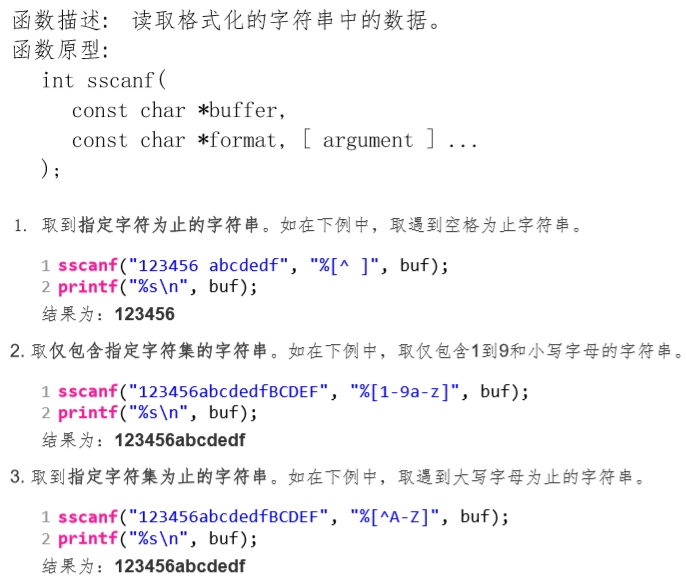
》正则表达式:
学习网址:
1)https://deerchao.cn/tutorials/regex/regex.htm
2)https://www.jb51.net/tools/regexsc.htm
》正则表达式速查表:
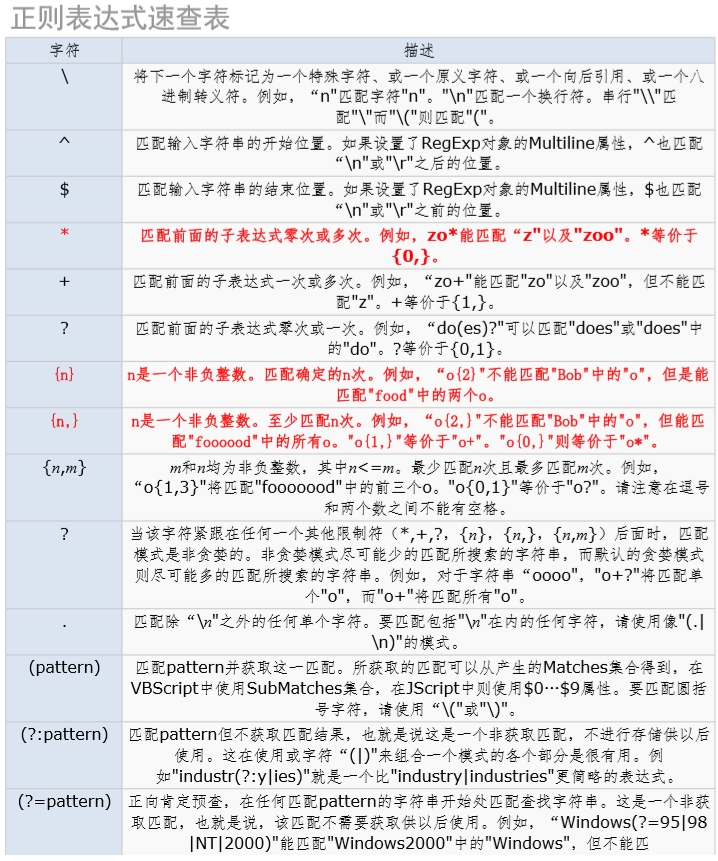
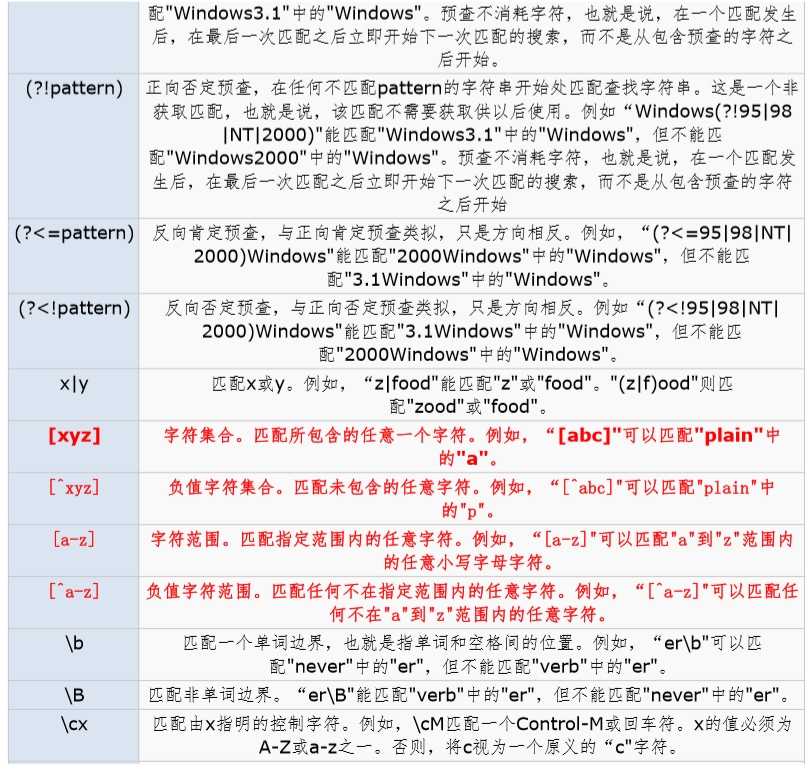

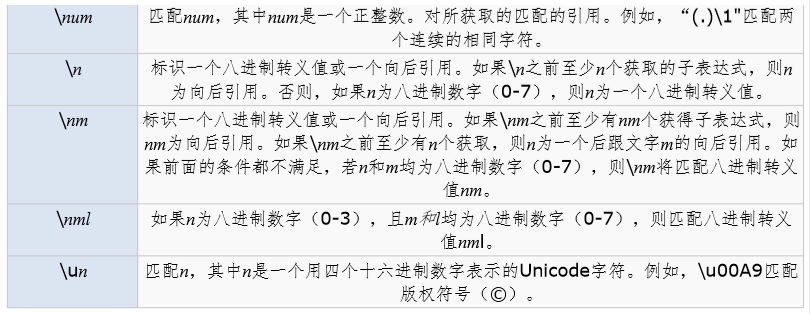
》常用正则表达式:

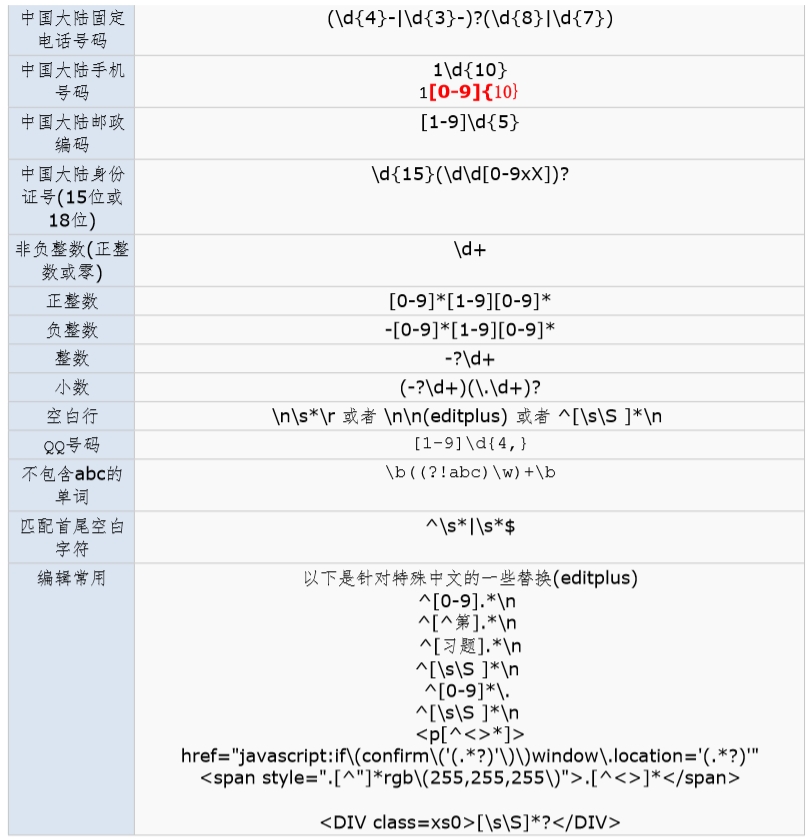
》scandir:

》数据转码:
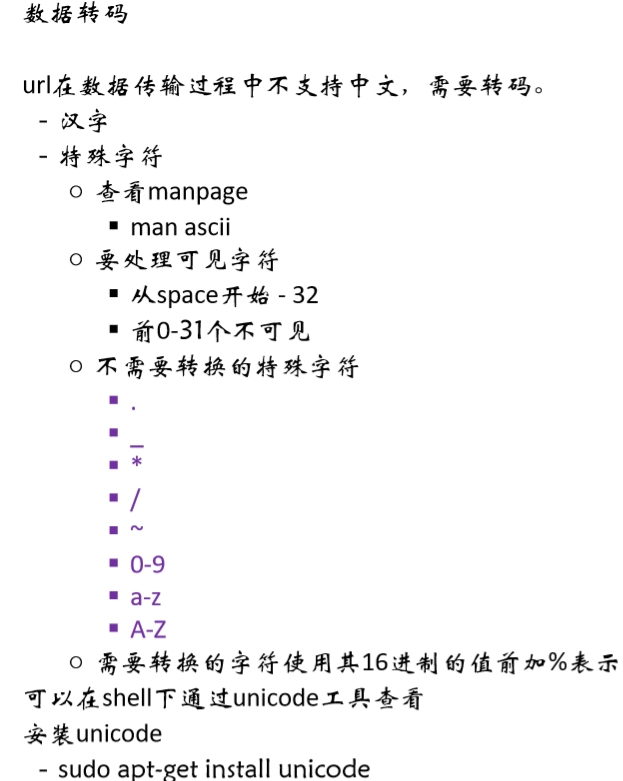
》安装:
>sudo apt-get install unicode
安装完成后
>unicode 中

在学习Linux高并发web服务器开发总结了笔记,并分享出来。有问题请及时联系博主:Alliswell_WP,转载请注明出处。
posted on 2020-07-14 11:48 Alliswell_WP 阅读(446) 评论(0) 收藏 举报




 浙公网安备 33010602011771号
浙公网安备 33010602011771号